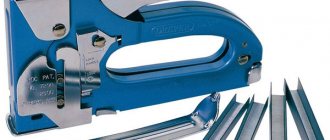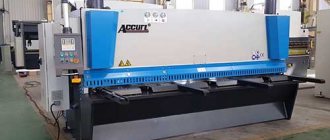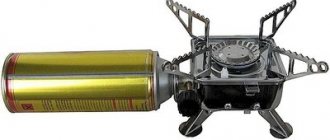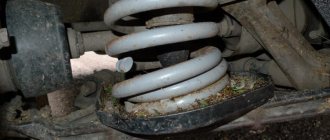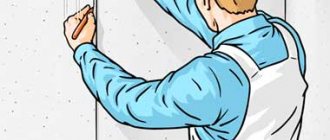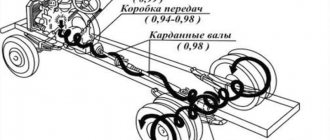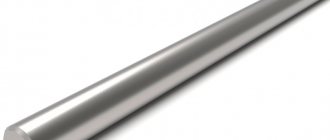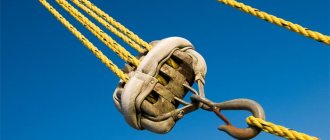History [edit | edit code]
The most ancient scissors, found by archaeologists on the modern territory of Ancient Rome, are 3-4 thousand years old and were intended for shearing sheep. These scissors were more like small tweezers with two blunt blades on both ends. The design existed for more than two thousand years without fundamental changes. The lever in scissors began to be used about a thousand years ago.
The invention of modern scissors, with a hinge between the blades and handles, is attributed to Leonardo da Vinci. However, earlier examples of such scissors have been repeatedly found.
Alternative theories
Some scholars claim that the ancient Egyptians mastered scissors as early as the 16th century BC. e. Archaeological finds support this theory, but the design of the Egyptian artifact is completely different from that in Rome. The scissors are forged from a single piece of metal, without connecting plates. In China and Eastern Europe, archaeologists have also found ancient scissors dating from around the same period. It is difficult to say for sure who exactly was the inventor, but one thing is clear: residents of different countries at the same time sought to improve their lives and created this extremely useful device.
Description [edit | edit code ]
Household scissors are usually used to cut paper and fabric. Manicure scissors are used to cut the top of the nail, and hairdressing scissors are used to trim the ends of hair, bangs, and change hairstyles. There are also different types of industrial scissors, for example for cutting sheet metal and cable. In order to reduce the force required to cut the material, scissors use the principle of leverage. Metal scissors come in left and right cut.
Hydraulic shears are widely used by rescuers, for example, to remove victims from a car after an accident.
Gallery [ edit | edit code ]
Chinese scissors, early mid-Tang Dynasty
A pair of iron scissors dating from the Han Dynasty.
Cutting tool
The scissors consist of three parts: two identical halves and a screw holding them together (Fig. 1). Each half of the scissors consists of a ring 1, a lever 2 and a working blade 3. The working blade has a tip 4, an end 5 and a butt 6.
Rice. 1. Scissors design:
There are four types of hairdressing scissors:
Straight scissors - designed for cutting hair, beard and mustache, as well as for thinning (Fig. 2). Professional hairdressing scissors differ from household scissors in the quality of the steel, the sharpening angle of the working blades, and their sharp tips. Straight scissors have long, medium and short working blades.
Scissors with a long working blade are used for cutting hair in the men's room (blade length 6 cm).
Scissors with a medium working blade are universal and are used in both men's and women's rooms (blade length 5.5 cm).
Scissors with a short working blade are used in the women's room, since the strands in the women's room are often cut from the inside of the fingers (length of the blade is 4.5 cm).
Rice. 2. Straight scissors
Thinning scissors – used for thinning and shading hair. There are two types:
· Double-sided – have teeth on both working blades.
· One-sided – only one blade has teeth (Fig. 3).
The principle of operation is that all hair that falls between the teeth remains long, all hair that falls on the teeth is cut off. Therefore, single-sided scissors cut more hair than double-sided scissors.
Rice. 3. Single-sided thinning scissors
Flag scissors - used for simultaneous cutting and thinning of hair (Fig. 4). One working blade of such scissors can be of three types:
· Same as regular straight scissors
· Like thinning
Working tight with two teeth
Rice. 4. Flag scissors
The second working blade has a nozzle with a pattern.
When cutting hair with such scissors, you can get (Fig. 5) either a strand with the ends of the hair thinned out in accordance with the pattern of the nozzle, or a lot of short and long hair with a pattern at the ends.
Sharpening methods
A professional approach angle is formed on special machines in the factory. It must be preserved and maintained. The article does not discuss factory technology, but publishes simplified methods available to the home craftsman for bringing household models into working condition.
Scissor straightening tools
Sharpener
The blades of the scissors are spread apart and alternately pulled through the slot prepared in the tool. The supply metal is ground down with abrasive materials. Rotating disks can be used for this. All nicks and irregularities are removed to a single level.
Various types of sharpeners can be purchased through Chinese online stores.
Diamond needle file or file
When sharpening, scissors should be firmly fixed or held tightly in your hand, resting it on some stationary object, for example, a table surface.
The cutting surface of the file must be positioned in only one plane. This technique ensures the same sharpening angle along the entire length of the blade. Its factory value must not be violated.
If there is a large notch on the surface of the file, additional polishing of the lead with another tool may be required.
whetstone, whetstone, whetstone
It is advisable to disassemble the scissors, but you can also work in assembled form. The technology is the same as when sharpening a knife using these devices. The supply is placed on the surface of the sharpening stone, the blade is directed in one direction, and the same angle of inclination is maintained at all times. The abrasive material is periodically moistened with water, removing particles of cut metal.
The photo shows work on a homemade whetstone made from ceramic tiles with your own hands.
If the shape of the blade differs from a straight line, having a convexity or concavity, then the direction of sharpening movement is changed by 90 degrees.
Available means
Let's look at the most affordable sharpening tool:
- sandpaper;
- foil;
- steel wool;
- glass bottle neck;
- steel wire.
Sandpaper
Select varieties with the smallest grains - zero. Cut it along the entire length of the blade. The abrasive material of the sandpaper, passing under the cutting edges, sharpens them.
Food or technical thin foil
The material is folded in several layers, cuts are made along the entire length of the blade.
Foil kitchen sponge
This method works according to the technology of the previous one. Scissors should work along the entire length of the blade.
Glass bottle
Grasping the neck with both blades, make cutting movements along their entire length in both directions. Surfaces are polished. Therefore, the plane of the inlets is positioned in the optimal direction for their alignment.
Needle, screwdriver or steel wire
By squeezing and unclenching the scissors, they are simultaneously processed with force along the entire length of the blades with the inserted needle.
Device and characteristics
The simplest scissors are two blades that converge in closely spaced parallel planes, with two rings that serve as handles. Cutting parts can have different shapes and sizes.
Material
The scissors are made of durable, wear-resistant material that is not afraid of high loads and mechanical factors.
Most often, products are made from the following materials: chrome vanadium steel, vanadium-manganese steel, chromium-nickel steel, high-carbon steel.
The handles are plastic, silicone, rubberized, with anti-slip coating.
Forms
The shape of the cutting parts can be straight, curly, with teeth, cutouts, notches.
It depends on what and where you will be cutting.
Types of scissors and their purpose
The universal hand tool has a wide range of applications.
There are many types of scissors, each of which differs in design features, appearance, size, weight, and technical characteristics.
Hairdressers
Hairdressers use straight models with a standard sharpening.
The tool provides a perfectly even trim of hair, beard or mustache.
Thinning devices with a serrated cutting edge are designed for thinning hair, trimming bangs, and performing a stylish, modern haircut.
There are also universal flag scissors with shaped blades.
They are widely used by stylists and hairdressers; they are suitable for both cutting and thinning.
Garden
Tools with a reinforced design and reliable blades are used for cutting branches and giving an aesthetic shape to bushes.
This type also includes special devices for cutting grass.
They are, of course, inferior to lawn mowers.
But with their help you can carefully remove excess in hard-to-reach places, near stones, statues, near the curb.
For metal
There are two types of scissors.
Monolithic models have a one-piece construction.
Working parts are made of durable steel.
Such devices are able to cope with increased loads.
Compound scissors are intended for professional use.
They can be used to cut roofing materials into pieces.
Kitchen
You can't do without scissors in the kitchen either.
Models that belong to this type are used for cutting rabbit, chicken, and quail carcasses.
They cope with the task faster and more accurately than conventional knives.
For cutting greens, there are products with several cutting blades.
Stationery
They can be equipped with long or short blades and always have comfortable handles.
The scope of application of products of this type includes cutting sheets of paper, cutting out figures, appliqués, handicrafts, etc.
Hydraulic
This type of scissors is used for cutting metal rods and wires.
They can be used to make perpendicular or angled cuts.
Lever design systems ensure a smooth transition of pressure from the drive to the cutting elements.
Handles are needed to secure the device.
Medical or surgical
These scissors are designed for cutting soft tissue, bones, and cartilage during surgical operations.
Products are divided into the following types: guillotine, hinged.
These in turn are divided into many different types.
For each type of operation, a different tool is used.
Electric scissors
The instruments are presented in several modifications and are divided into several types.
Sheet shears are used to dismantle metal structures and cut sheets up to 5 cm thick.
According to the principle of operation and design features, they resemble household ones, they are distinguished by high productivity, compact size, reliability and functionality.
Splined ones are equipped with several knives, cope with folds, and do not deform the steel sheet.
Electric scissors of various types are convenient to use, productive, and increase the productivity and effectiveness of the work of the master.
Die-cut or die-cutting models are widely used for metal processing.
Their design consists of two main elements: a matrix and a punch.
Models can be used to make a variety of cuts: according to a template, straight, curved.
Nibblers produce a clean cut and there are no signs of deformation on the workpiece.
In addition, you can cut not only from the edge of the sheet, but also from the middle, but first you need to make a hole in the metal.
These are not all types of scissors, but only the main and most popular ones.
An interesting variety are knife models designed for straight and shaped cutting of metal.
The power tool is equipped with two knives: movable and fixed.
The cutting is smooth, precise, without waste.
But roller ones are used in roofing and fence construction.
Ancient Greek legend
In ancient times, there lived a shepherd in ancient Greece. He wandered through pastures full of various amazing creatures. And one day I saw a beautiful reflection from the high green mountains. His curiosity led him higher and higher, past lakes with nymphs splashing in them, past grazing unicorns.
Finally, he wandered onto a high mountain full of sheep with golden wool. They were unusual. In order to be believed, the shepherd cut a bag of wool from the animals with two folded knives.
When he returned and showed the find, people did not immediately believe in such a miracle. They asked what the Golden Fleece was cut with. The shepherd showed his device and after that became known in his village as a respected and rich man.
What you need to know about scissors
No matter how safe scissors may seem, no matter what protection system is used in their manufacture, do not forget that the main purpose of this tool is cutting.
Any device is equipped with cutting elements, which can easily cause injury and even serious injury.
Therefore, when using scissors, regardless of their type, do not forget to take precautions, use personal protective equipment, and perform the work carefully and thoughtfully.
How to use scissors
We learned the rules for using ordinary scissors since childhood.
Of course, we know that they need to be passed rings first and stored with the blades closed.
But do you know how to properly use tools designed for cutting metal?
They differ from standard models in design, power, and scope of application.
• work in a hat and fitted clothing, make sure that nothing dangles or hangs anywhere (shirt, tie); • before starting work, put on impact glasses; • choose the correct, stable posture, watch your body position; • do not be distracted by other operations, fully concentrate on the type of work you are performing; • do not forget to remove the wrenches and adjusting keys from the power tool; • do not subject the device to excessive loads; • do not interfere with the design of products; • check the functionality of the tools before each use.
After completing the operations, do not forget to turn off the tool, if the device is manual, close the blades and secure with the locking mechanism.
Models designed for cutting metal require proper maintenance: cleaning of metal shavings, lubrication of rubbing components.
How to choose scissors?
If you have already decided on the type of scissors, then go deeper into the technical characteristics of the models, select several options, and among them – the most suitable model.
For example, when choosing a tool for metal processing, the following parameters should be taken into account:
• left or right execution; • maximum cutting thickness; • material for manufacturing working elements; • what the handles are made of; • length, weight, size.
When purchasing a tool, be sure to evaluate its appearance.
There should be no defects or burrs on metal parts.
The presence of such flaws indicates the low quality of the model.
Such scissors cannot boast of a long working life and are not intended for frequent use.
Why are numbered tension screws needed?
Throughout, you can see the original feature - a numbered tension screw. Hairdressers have repeatedly sent us special thanks for it - after all, it allows you to constantly control the tension of the scissors, while performing a special test not every day, like other hairdressers, but very rarely.
In addition, it allows you to see how well you have tightened the scissors - just remember what number you usually stop at.
Moreover, it makes it extremely easy to adjust the scissors to the hair of a particular client. Many people, you know, prefer to approach coarse and thin hair with different scissor tensions.
In general, it’s a smart thing. Try it if you have never worked with these before.

